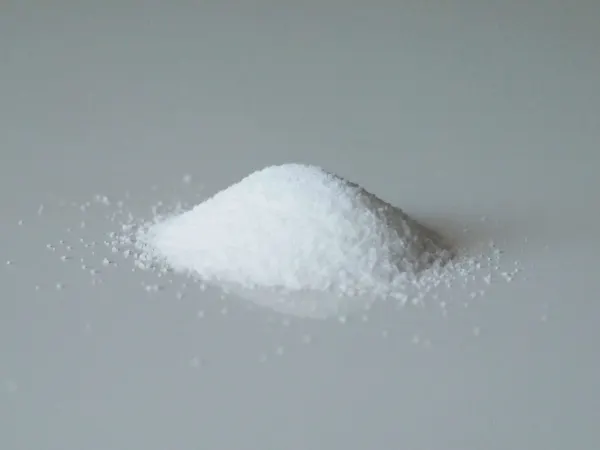Stevia
Sweetener
Age Suggestion
24 months
Iron-Rich
No
Common Allergen
No

Warning
While research is lacking on the long-term health effects of stevia on young children, stevia can cause headaches, dizziness, nausea, and other symptoms in adults. It is our opinion that it is best to wait to introduce stevia until age 2 and even then to limit the amount offered.
When can babies have stevia?
While it is considered safe to introduce certain stevia extracts after baby’s first birthday, it is our strong opinion that it is best to hold off on introducing the sweetener until after 24 months of age for two reasons. First, research is lacking on the long-term health effects for children consuming stevia. Second, in excess, any sweeteners in a baby or toddler’s diet can reduce the diversity of foods the child is interested in eating. If you want to sweeten baby’s food, consider using fresh fiber-containing fruits, such as banana, figs, strawberries, or another naturally sweet fruit.
About stevia
Stevia rebaudiana, or ka’a he’e, is a shrub native to a very small region in South America with leaves that contain glycosides (naturally sweet, sugar-free botanical compounds). While stevia has only become more widely available in the United States in the last few decades, the indigenous Guarani people have used the stevia plant as a sweetener, as well as for medicinal and ceremonial purposes, for centuries. Now grown world-wide, stevia is often available at local garden centers as an herb you can grow at home. The leaves of the stevia plant are processed into liquid or powder extracts of steviol glycosides that are 200-400 times sweeter than sucrose, or table sugar. In the US, only the purified extract is approved as a food additive sweetener (not the whole leaf), but it has remained a popular sugar alternative because of its natural origins.
Is stevia safe for babies?
It’s unclear. While purified steviol glycoside extract is generally recognized as safe by the FDA, more research is needed on the long-term impacts of stevia on babies and young children. And even for adults, large amounts of steviol glycosides can cause headaches, dizziness, numbness, and nausea, as well as decreased appetite in some individuals.
For children older than 12 months of age, it’s generally accepted to be okay to offer a small amount of sweetened food, though waiting to offer sugar and other sweeteners until the 2nd birthday is ideal.
Is stevia a common choking hazard for babies?
No. Stevia itself is not a common choking hazard, though the foods it is in certainly can be. As always, make sure you create a safe eating environment and stay within an arm’s reach of baby during meals.
For more information on choking, visit our sections on gagging and choking and familiarize yourself with the list of common choking hazards.
Is stevia a common allergen?
No. Allergies to stevia are rare but have been reported. However, the already low rate of documented reactions to stevia decreased significantly after 2008, when highly purified stevia products became more commonly available. People who are allergic to ragweed pollen and individuals with Oral Allergy Syndrome (also known as pollen-food allergy) may be hypersensitive to stevia. Oral Allergy Syndrome typically results in short-lived itching and burning in the mouth and is unlikely to result in a dangerous reaction.
Recommended Guide: Introducing Allergens
How do you introduce stevia to babies with baby-led weaning?
Every baby develops on their own timeline, and the suggestions on how to cut or prepare particular foods are generalizations for a broad audience.
6 to 12 months old:
Avoid.
12 to 24 months old:
Avoid. Research suggests that the use of sugar alternatives may negatively impact a child’s taste reception, which could affect willingness to try new foods.
24 months old and up:
Once you’ve considered the impact of sweeteners on a child’s diet and read up on the potential side effects above, consider adding scant amounts of stevia to caffeine-free herbal teas, baked goods, and other foods. The recommended maximum daily amount of steviol glycosides considered safe by the FAO/WHO Expert Committee on Food Additives is 4 mg per kg body weight daily.
Check out our FAQ on Cup Drinking for help developing baby's skills with open cups and straws.
Written and reviewed by these specialists
E. Cerda, MSN, CNS, LDN
A. Gilbaugh, RD, CNSC
K. Grenawitzke, OTD, OTR/L, SCFES, IBCLC, CNT
S. Bajowala, MD, FAAAAI. (allergy section)
R. Ruiz, MD Board-Certified General Pediatrician and Pediatric Gastroenterologist
Expert Tips Delivered to Your Inbox
Sign up for weekly tips, recipes and more!
The content offered on SolidStarts.com is for informational purposes only. Solidstarts is not engaged in rendering professional advice, whether medical or otherwise, to individual users or their children or families. No content on this site, regardless of date, should ever be used as a substitute for direct medical advice from your doctor or your medical or health professional, nutritionist, or expert in pediatric feeding and eating. By accessing the content on SolidStarts.com, you acknowledge and agree that you are accepting the responsibility for your child’s health and well-being. In return for providing you with an array of content “baby-led weaning” information, you waive any claims that you or your child may have as a result of utilizing the content on SolidStarts.com.


